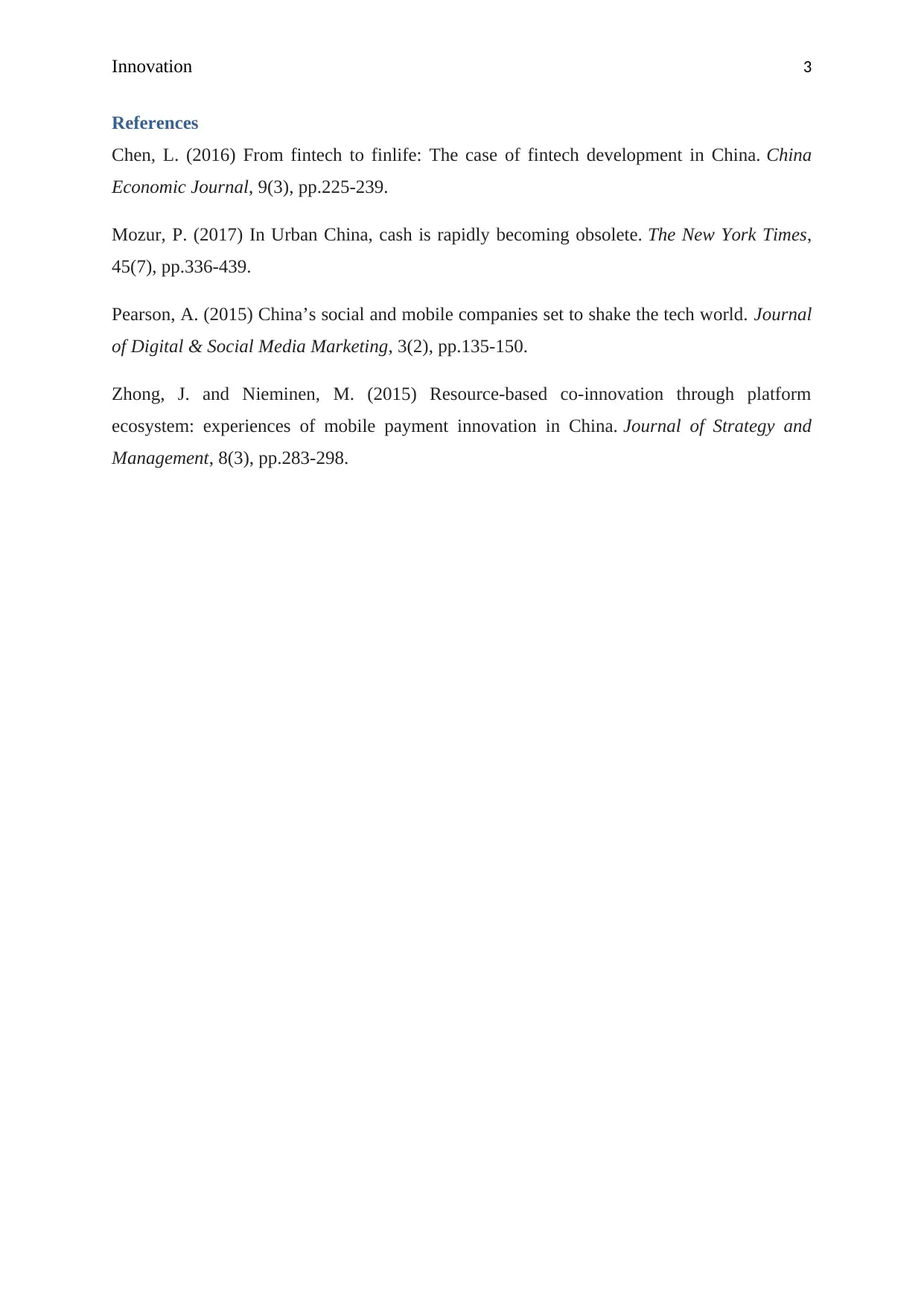Exploring Mobile Payment Success: China's Innovation Advantage
VerifiedAdded on 2023/04/21
|4
|797
|101
Essay
AI Summary
This essay examines the factors contributing to the greater success of mobile payments in China compared to Western countries. It highlights the role of trust-building initiatives like Alipay's escrow system, the widespread adoption of smartphones, and the innovative use of platforms like WeChat. The essay contrasts China's rapid embrace of mobile payments with the slower adoption rates in countries like the USA and Japan, attributing China's success to its large underbanked population, a less mature regulatory environment fostering innovation, and the dominance of e-commerce giants like Alibaba. It concludes that China is leading the way towards a cashless society due to its accessible mobile payment technologies and widespread consumer adoption. Desklib provides this assignment solution and many other resources for students.
1 out of 4











![[object Object]](/_next/static/media/star-bottom.7253800d.svg)